2023
- I wanted my kids to play games instead of passively consuming endless amounts of YouTube.
- I wanted to combat my burnout and depression by picking up gaming again.
The social semi-permeable membrane
I never used LiveJournal, but I love Ben Werdmuller’s description of it as a place to journal in private with your friends. Although that’s not exactly what Substack provides, the interaction between the longer-form and the shorter form (through Substack Notes) is getting there.
It’s not as if it would be ideal to just have a place for existing friends, as you need new people and ideas to mix things up a bit. So it’s that semi-permeable membrane that makes things interesting: not quite fully public, but not quite fully private.
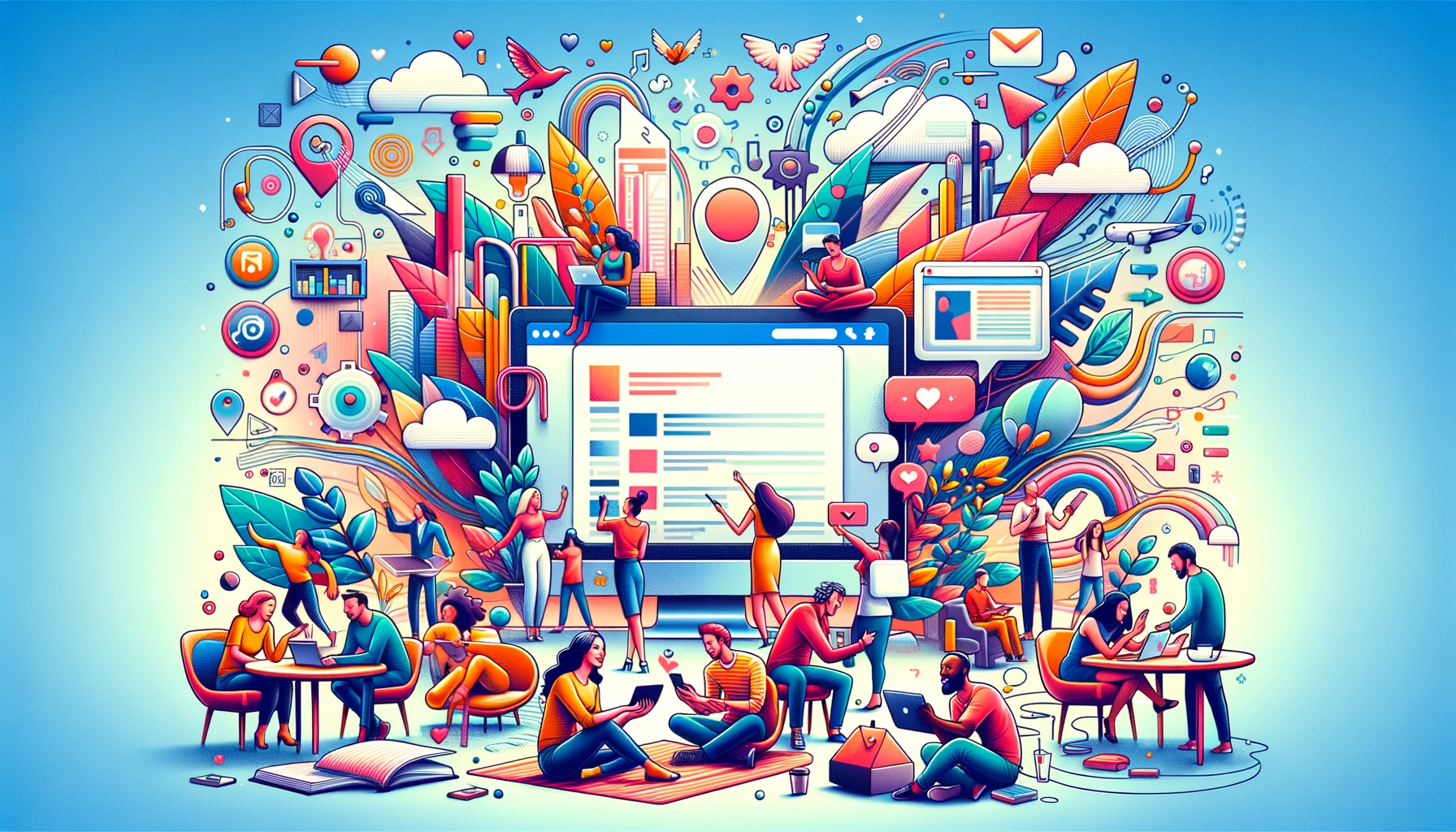
If you missed its heyday about twenty years ago, LiveJournal was a private blogging community that led to much of what we know as social media. You could follow your friends, and they could follow you back if they wanted; your posts could be shared with the whole world, just with your friends, or with a subset. Every post could host thriving, threaded discussions. You could theme your journal extensively, making it your own. And while you could post photos and other media, it was unapologetically optimized for long-form text. The fact that the whole codebase was also open sourced, paving the way for Dreamwidth and other downstream communities, didn’t hurt at all. Brad Fitzpatrick, its founder, went on to build a stunning number of important web building blocks.Source: Journaling in private with my friends | Ben Werdmuller[…]
Public social networks force us to use a different facet of our identities. In a private space with your friends, nobody really cares about your job, and nobody’s hustling to promote whatever it is they’re working on. Twitter nudged social networking into becoming a space for marketing and brands, which is a ball the new Twitter-a-likes have picked up and carried. Much like the characters from The Breakfast Club, each of the new Twitters has its own stereotypical niche: the nerds, the brands, the rich people, the journalists. But they all feel a little bit like people are trying to sell ideas to you all of the time.
Systems and interconnected disaster risks
When you see that humans have exceeded six of the nine boundaries which keep Earth habitable, it’s more than a bit worrying. But then when you follow it up with this United Nations report, it makes you want to do something about it.
I guess this is one of the reasons that I’m interested in Systems Thinking as an approach to helping us get out of this mess. I can imagine pivoting to work on this kind of thing, because (as far as I can see) everyone seems to think it’s someone else’s problem to solve.

Systems are all around us and closely connected to us. Water systems, food systems, transport systems, information systems, ecosystems and others: our world is made up of systems where the individual parts interact with one another. Over time, human activities have made these systems increasingly complex, be it through global supply chains, communication networks, international trade and more. As these interconnections get stronger, they offer opportunities for global cooperation and support, but also expose us to greater risks and unpleasant surprises, particularly when our own actions threaten to damage a system.Source: 2023 Executive Summary - Interconnected Disaster Risks | United Nations University - Institute for Environment and Human Security (UNU-EHS)[…]
The six risk tipping points analysed in this report offer some key examples of the numerous risk tipping points we are approaching. If we look at the world as a whole, there are many more systems at risk that require our attention. Each system acts as a string in a safety net, keeping us from harm and supporting our societies. As the next system tips, another string is cut, increasing the overall pressure on the remaining systems to hold us up. Therefore, any attempt to reduce risk in these systems needs to acknowledge and understand these underlying interconnectivities. Actions that affect one system will likely have consequences on another, so we must avoid working in silos and instead look at the world as one connected system.
Luckily, we have a unique advantage of being able to see the danger ahead of us by recognizing the risk tipping points we are approaching. This provides us with the opportunity to make informed decisions and take decisive actions to avert the worst of these impacts, and perhaps even forge a new path towards a bright, sustainable and equitable future. By anticipating risk tipping points where the system will cease to function as expected, we can adjust the way the system functions accordingly or modify our expectations of what the system can deliver. In each case, however, avoiding the risk tipping point will require more than a single solution. We will need to integrate actions across sectors in unprecedented ways in order to address the complex set of root causes and drivers of risk and promote changes in established mindsets.
Image: DALL-E 3
System innovation is driven by reshaping relationships within the system
As I may have mentioned a little too often recently, I’m about to start an MSc in Systems Thinking. So I’m always on the lookout for useful resources relating to the topic.
I came across this one by Jennie Winhall and Charles Leadbeater from last year, which discusses how system innovation is driven by reshaping relationships within the system. It identifies four keys to system innovation: purpose, power, relationships, and resource flows. The focus is on relationships, which are the patterns of interactions between parts of a system. Transforming a system requires altering these relationships, which in turn unlocks other keys like purpose and power.
(Over a decade ago, I lined up to talk with Leadbeater after his talk at Online Educa Berlin. I was going to ask him something specific about his most recent book, but as everyone before him gushed over it, I think I just mumbled something about not liking it and then sloped off. Not my finest moment. Apologies, Charles, if by some reason you’re reading this!)
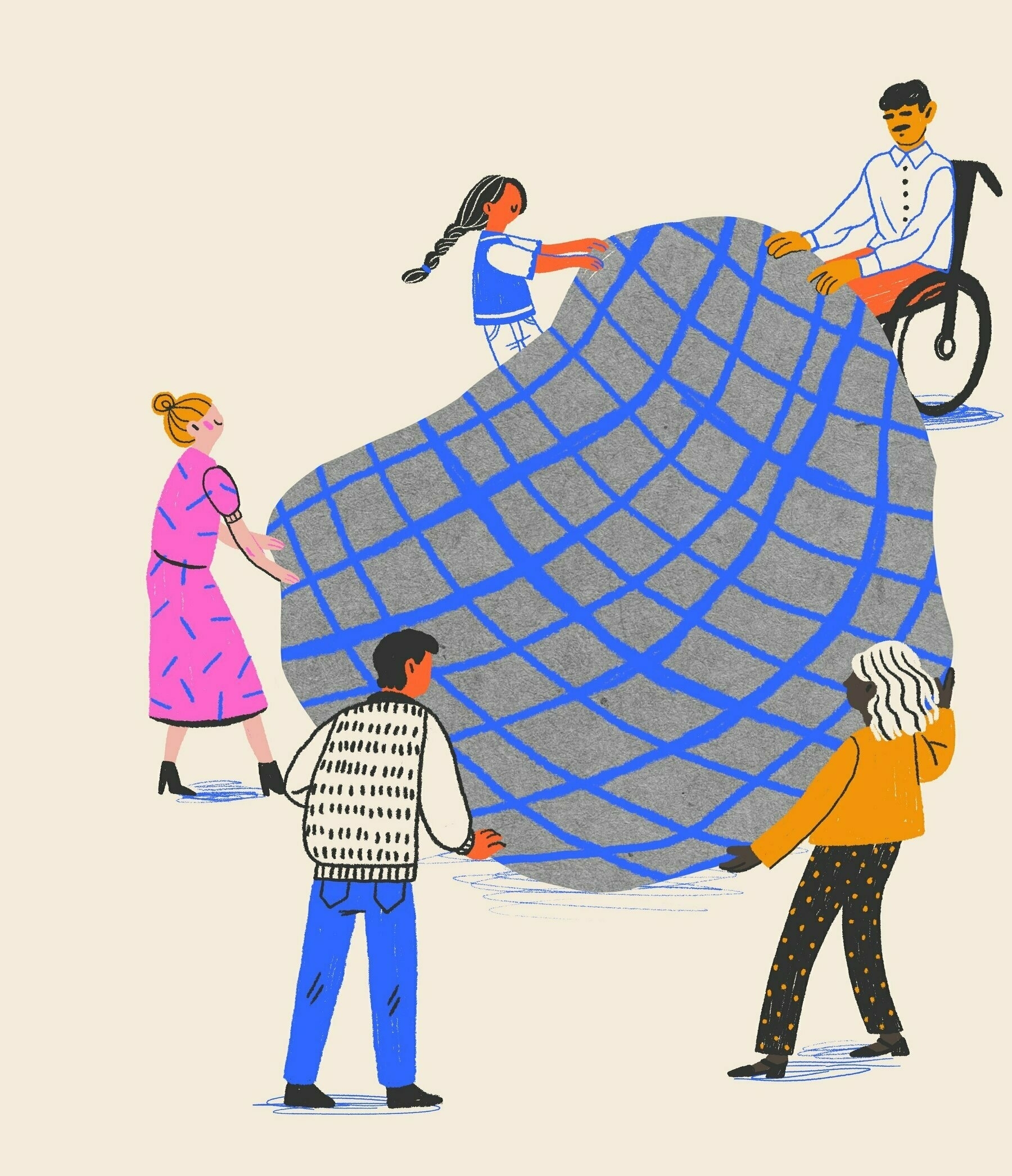
Systems are defined by the patterns of interactions between their parts: their relationships. Those interactions generate the outcomes of the system as a whole. Transforming the outcomes of a system requires remaking its relationships and then unlocking the other keys to system innovation: purpose, power and resources. This shift in relationships allows all those in the system to learn faster, to be more creative. System innovators redesign the relationships in the system to allow dramatically enhanced learning across the system, and thereby generate far better outcomes.Source: The Patterns of Possibility | The System Innovation Initiative
Tech typologisation
People love being typologised. I’m no different, although my result as an ‘Abstract Explorer’ in IBM’s Tech Type quiz wasn’t exactly a surprise.
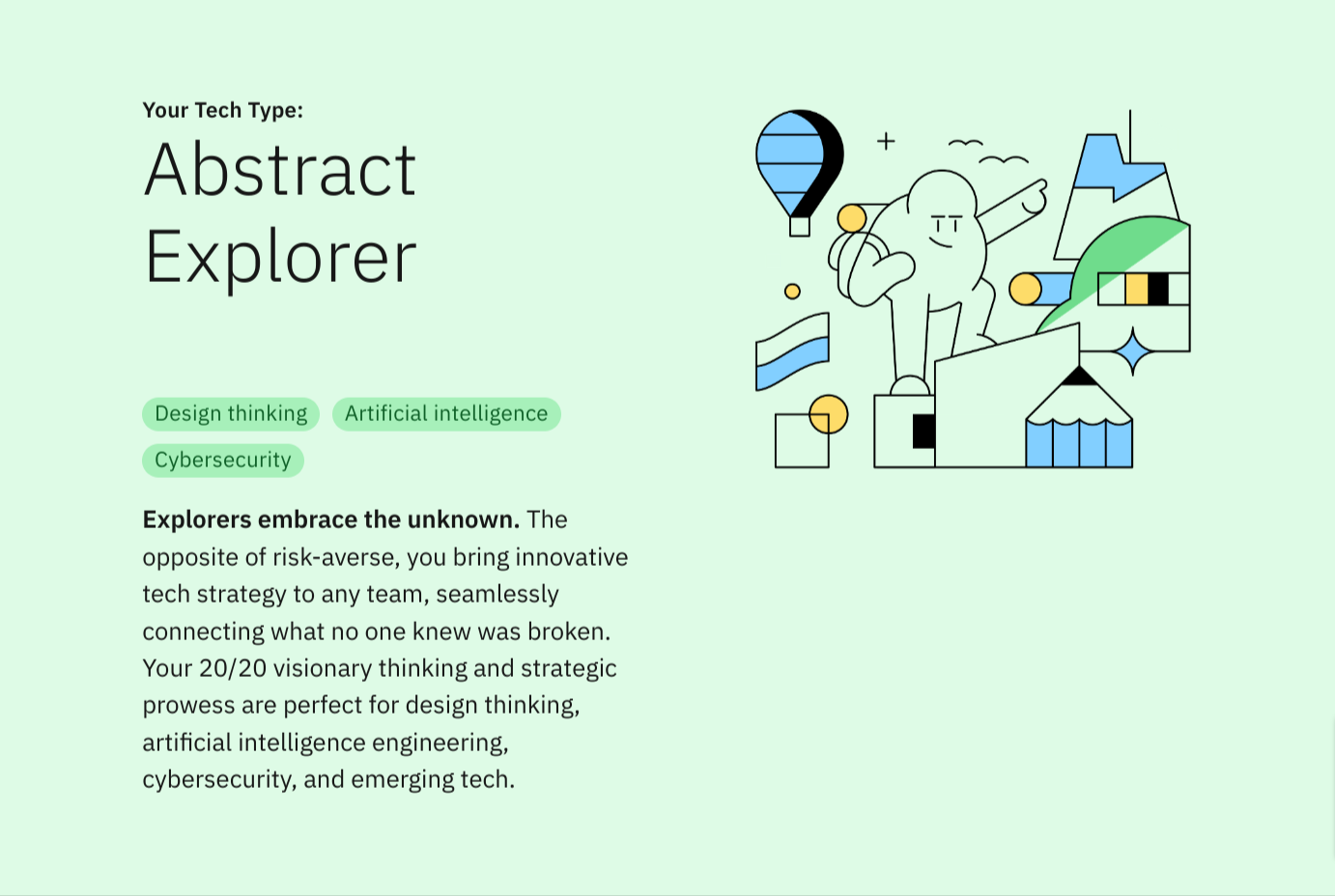
Source: Tech Type Quiz | IBM SkillsBuildConsider this: a quiz to guide you to your unique fit for tech skills based on your strengths and interests. Find your future with this personalized assessment, bringing you one step closer to new skills to enhance your career in tech and key skills like artificial intelligence (AI). And it takes less than 5 minutes.
Is this the end of the 'extremely online' era?
As I mentioned in a recent post, you can’t win a war against system designed to destroy your attention. You have to try a different strategy. One of those is disengaging, which is what Thomas J Bevan is noticing, and advocating for, in this post.
I like his mention of going to a place where he noticed there was “something off” and he realised nobody was using their phone. Not because they weren’t allowed to, but because they were having too much of a good time to bother with them.
<img class=“alignnone size-full wp-image-8855” src=“https://thoughtshrapnel.com/wp-content/uploads/2023/10/DALL·E-2023-10-26-21.10.14-Vector-art-showing-a-massive-pile-of-smartphones-stacked-high-with-a-single-small-flower-growing-from-the-top-symbolising-hope-and-a-return-to-auth-1.png” alt=“Vector art showing a massive pile of smartphones stacked high, with a single, small flower growing from the top, symbolising hope and a return to authenticity.
" width=“1024” height=“1024” />
The consequences of life lived online have bled through into the real world and this has happened because we have allowed them to. It’s a cliché to say that real life is now a temporary reprieve from the online, as opposed to the other way around. We pay the price for all of this via boarded up shops, closing pubs, empty playgrounds and silent streets as each individual stays at home each night, enchanted by the blue flicker of their own little screen feeding them their own walled in world of news and content and edutainment.Source: The End of the Extremely Online Era | Thomas J BevanI believe it will end, this so-called way of life. Not through the Silicon Valley oligarchs spontaneously developing a conscience or being legislated into acting with a modicum less sociopathy. I don’t believe people will be frightened into changing how they act or suddenly shamed into putting their phones down for once in their lives. Such interventions don’t work with most addicts and more and more people are legitimately hooked on their devices than we are currently willing to countenance. No, I think this will all end, as T.S Eliot said, with a whimper. People will simply lose interest and walk away. Because the internet now is boring. People spend all day scrolling because they are trying to find what isn’t there anymore. The authenticity, the genuinely human moments, the fun.
Image: Created with DALL-E 3
Treating depression with hot yoga
Although I don’t think he went for the reasons given in this article, my late, great friend Dai Barnes used to love hot yoga. In fact, living as a teacher on-site at a boarding school, he’d travel miles to go to his nearest venue.
This Harvard Gazette article suggests that hot yoga might help with depression. I can definitely understand that: I’ve just re-added the spa to my leisure centre membership, and even just going in the sauna at this time of year feels incredible.

In a randomized controlled clinical trial of adults with moderate-to-severe depression, those who participated in heated yoga sessions experienced significantly greater reductions in depressive symptoms compared with a control group.Source: Heated yoga may reduce depression in adults | Harvard Gazette[…]
In the eight-week trial, 80 participants were randomized into two groups: one that received 90-minute sessions of Bikram yoga practiced in a 105°F room and a second group that was placed on a waitlist (waitlist participants completed the yoga intervention after their waitlist period). A total of 33 participants in the yoga group and 32 in the waitlist group were included in the analysis.
[…]
After eight weeks, yoga participants had a significantly greater reduction in depressive symptoms than waitlisted participants, as assessed through what’s known as the clinician-rated Inventory of Depressive Symptomatology (IDS-CR) scale.
Why haven't you bought a Steam Deck yet?
I love my Steam Deck, and am so pleased that I not only bought it, but I bought the maxed-out version, despite the cost. This post goes into reasons why it’s so good.
Among other things, the author, Jonas Hietala, touches on the Steam library, sleep mode, and the fact that it’s an open platform. I think my favourite thing is its flexibility. It can even be used as a Linux desktop machine!
As I’ve said in other posts, I feel sorry for non-gamers. I get plenty of stuff done in my life, including parenting, and I’m a gamer. You’re missing out.
In the beginning of the year I gave myself a late Christmas gift and bought a Steam Deck for myself. There were two main reasons I decided to buy it:Source: The killer features of the Steam Deck | Jonas HietalaAnd boy did it deliver. The Deck is probably the most impressive thing I can remember buying since… I don’t know, maybe my first smartphone?
Zoom backgrounds with a Japanese nature retreat vibe
Not only did I love Swarnali Mukherjee’s writing in this post, I also absolutely adored the image that went with it. You may have noticed that I created something similar-looking with DALL-E 3 to illustrate one of yesterday's posts.
As we're moving house at the moment, and my home office is full of boxes, I'm using my Elgato green screen. While the view from the Death Star is great, I wanted something a bit more (literally) down-to-earth.

I created these images for my own use, and the one above is my favourite. Click for the full-sized versions and use them however you wish.






The casual ableism of futurism
This article by Janet Gunter discusses the endemic ableism she’s discovered due to her new and invisible disability (Long Covid). As a technologist and anthropologist, she notes that even progressive futurist notions such as solarpunk are problematic for people like her who rely on complex supply chains.
We need to do better to understand that a future that doesn’t work for us all is, as Janet points out, exclusionary and essentially a form of fascism.
<img class=“alignnone size-full wp-image-8827” src=“https://thoughtshrapnel.com/wp-content/uploads/2023/10/DALL·E-2023-10-24-20.15.19-Photo-of-a-circular-wooden-cabin-in-a-serene-forest-setting.-Inside-a-person-who-appears-tired-and-fatigued-is-resting-on-a-tatami-mat-taking-a-mome-1.png” alt=“DALL-E: Photo of a circular wooden cabin in a serene forest setting. Inside, a person who appears tired and fatigued is resting on a tatami mat, taking a moment to rejuvenate. The cabin’s large round windows offer panoramic views of the dense trees and distant mountains, while the interior showcases Japanese minimalism with sliding paper doors and a central meditation space.
" width=“1024” height=“1024” />
Scanning back to scifi of my childhood, the only disabled character in Starwars was Darth Vader. And Vader is a perfect posterboy for the usual scifi treatment of disability – a canvas for creepy transhumanist visions of “fixing” the disabled and the hiding of disability. (It turns out, now, there are rare good depictions of the disabled in scifi, but you have to know where to look!)Source: Crip futurism | Janet GunterOthers have observed that ignoring or devaluing the concerns of the most vulnerable — or suggesting that they get fixed or deleted from a future green society — is tantamount to ecofascism.
[…]
What the ableist world needs now is acceptance of cataclysmic change and all of the grief that comes with that. Acceptance that our Cartesian minds will destroy us, that we need to learn to listen to our bodies and to the biosphere. Acceptance that the pace of our lives must change.
Personally, I desperately need visions of the future where I can be an active, valued participant, no matter my physical or cognitive state. I need everybody involved in envisioning and testing new ways of living within our planetary boundaries to consider and include people like me at the outset, not as an after-thought.
Image: generated with DALL-E 3
Philosophy and friendship
Laura Kennedy writes about loneliness in a post that documents her experiences moving from Ireland to London, and then on to Australia. What I’m interested in, though, is the turn of phrase when she states: “A philosopher quite literally wouldn’t know a friend for sure if they were standing in front of us recreating the love declaration scene from Love Actually.”
I’ve always been a bit hesitant about calling someone a ‘friend’ although I’m getting better at it in my middle-age. I think this is perhaps, as I’ve mentioned before, I’ve perhaps had too high a bar in mind. Nothing I experience is likely to hit the heights of Montaigne’s relationship with Étienne de La Boétie, for example.

In 2018, after first moving to London and a few months into my new life, I was struggling to figure out how I fit into it. I wrote an article in The Irish Times about not having many friends and not being sure what to do about it, or whether it even constituted a problem. Come to think of it, I wasn’t entirely sure what constituted a ‘friend’ at all. I’m still unsure. Yes – I know. This, again, is why everyone hates philosophers. These sorts of questions are appealing only to a very narrow pool of potential future friends. A philosopher quite literally wouldn’t know a friend for sure if they were standing in front of us recreating the love declaration scene from Love Actually. I’ve taken creative licence there. Nobody has ever declared undying forbidden romantic love for a philosopher. Conceivably Spinoza, but apart from him (and perhaps Kierkegaard and de Beauvoir. Frantz Fanon. Max Stirner maybe? It’s the glasses), there really isn’t a looker in the bunch.Source: On Loneliness | Peak Notions
Laying to rest a foundational myth
The widely accepted “Man the Hunter” theory proposes that during human evolution, men evolved to hunt while women focused on gathering and domestic duties such as child-rearing. However, as reported in Scientific American, it turns out that recent research is challenging this view.
Scientific studies indicate that women are physiologically better suited for endurance tasks, which is crucial for hunting. Also, although ignored for societal reasons (read: the patriarchy) archaeological records and ethnographic studies demonstrate that women have a longstanding history of participating in hunting activities.
I’m pleased that our 12 year-old daughter inhabits a world where female footballers are allowed to compete in the same way as men in most areas of life. There is still a lot of inequality, but it helps when we dismantle these foundational myths.

Mounting evidence from exercise science indicates that women are physiologically better suited than men to endurance efforts such as running marathons. This advantage bears on questions about hunting because a prominent hypothesis contends that early humans are thought to have pursued prey on foot over long distances until the animals were exhausted. Furthermore, the fossil and archaeological records, as well as ethnographic studies of modern-day hunter-gatherers, indicate that women have a long history of hunting game. We still have much to learn about female athletic performance and the lives of prehistoric women. Nevertheless, the data we do have signal that it is time to bury Man the Hunter for good.Source: The Theory That Men Evolved to Hunt and Women Evolved to Gather Is Wrong | Scientific American[…]
So much about female exercise physiology and the lives of prehistoric women remains to be discovered. But the idea that in the past men were hunters and women were not is absolutely unsupported by the limited evidence we have. Female physiology is optimized for exactly the kinds of endurance activities involved in procuring game animals for food. And ancient women and men appear to have engaged in the same foraging activities rather than upholding a sex-based division of labor. It was the arrival some 10,000 years ago of agriculture, with its intensive investment in land, population growth and resultant clumped resources, that led to rigid gendered roles and economic inequality.
Now when you think of “cave people,” we hope, you will imagine a mixed-sex group of hunters encircling an errant reindeer or knapping stone tools together rather than a heavy-browed man with a club over one shoulder and a trailing bride. Hunting may have been remade as a masculine activity in recent times, but for most of human history, it belonged to everyone.
What, after all, is 'redemption'?
This article by Hanif Abdurraqib in The Paris Review draws analogies between one of my favourite games, Red Dead Redemption 2, and his own life. It’s probably worth pointing out that the article contains spoilers for the single-player version of the game.
What I appreciated about Abdurraqib’s writing is that he doesn’t use the world ‘escapism’ to describe gaming. Instead, he discusses notions of heaven and hell, of what ‘redemption’ might actually mean, and explores the complexities of life.
For me, I play games which, like Red Dead Redemption 2, allow me to play morally-questionable characters. It’s a form of release, for sure, but it’s also an opportunity to explore a side of oneself perhaps impossible to do so given current real-world constraints.
It’s for this reason that I feel sorry for non-gamers. Where do they get this kind of experience?
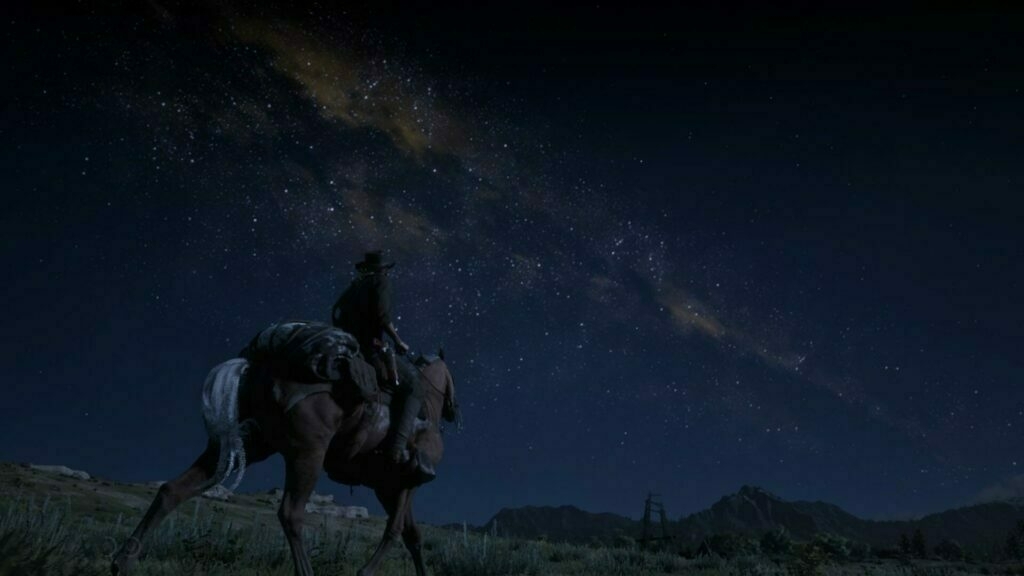
A therapist asked me once if I thought of myself as redeemable, and I’m almost certain I laughed it off, or detoured toward another answer that sounded satisfying but actually said nothing. I believe in redemption in the same way that I believe in heaven: I feel required to. Not only because of my personal politics, but also because of my social interests, and my investment in others beyond myself, and also—yes—because I do imagine that somewhere along the uneven path of my life, I’ve tried to be better more often than I have been worse. I suppose I’m cynical about all of it, though. The world, as it stands, is obsessed with punishment, particularly for the most marginalized. Punishment for living in the margins, or an intersection of the margins. I don’t know if my personal beliefs in redemption can undo that massive ghost, hovering over so many of our lives, baked into our impulses, even when we know better. Even when we, ourselves, have been on the losing end of that impulse.Source: We’re More Ghosts Than People | The Paris ReviewIt is easy to attempt to redeem Arthur in a world that isn’t real. To play a mission where Arthur kills, rides away over a trail of dead bodies, and then goes and helps the camp with chores. Picks some flowers along a hillside. Helps a family build a house. In a world where no one is reminding you of the wreckage you’ve taken part in, it’s easy to compartmentalize your damage and chase after that which is strictly beautiful, or cleansing. Climbing your way toward the upper room by any means necessary, on the wings of anyone who will have you.
The inner world as the ultimate prison
I wanted to quote so much of this article that it would have ended up being a Borges-like 1:1 map of the territory. Instead, I’ll simply share the part of Swarnali Mukherjee’s writing which resonated most with me.
Do go and read the whole thing.
(I discovered this via Substack Notes, in which I have no financial interest, but simply finding to be a chill and serendipitious alternative to other social media)

The problem is simple: most of us have normalized and even glorified the hustle for success. The issue lies not in the hustle itself but in the often overlooked aspect of burning out. When success is defined in terms of societal parameters such as wealth, fame, and the emphasis on building an identity, life's entire focus becomes sustaining and amplifying this ego at the cost of our well-being, both psychologically and physically. We reinvent spaces in our intellectual worlds to serve this gigantic ego that we have conjured over the years but seldom find true happiness there. Our inner world becomes our ultimate prison, from whose window our persistent illusion of success resembles fireworks, promising that we can achieve them as long as we stay in the prison. This is a subtle deception of our social constructs; we humans have meticulously constructed these labyrinths of illusions to shield ourselves from the truth that even if we are in service to our desires, they are influenced by external factors. In that manner, doing something because the world expects it, that you won’t be doing otherwise is also a form of imprisonment.Source: The Art of Disappearing | Berkana
Monetising a hobby is different to solving a difficult problem for people ready to pay
Life is never as simple as a 2x2 matrix, but they’re incredibly useful for helping illustrate a key message. In this post, Seth Godin uses one to make the obvious-if-you-think-about-it point that trying to monetise a hobby is a different thing to solving a difficult problem for a group of people who are willing to pay for a solution.
I’ve been thinking about this kind of thing a lot recently given the ongoing need for WAO business development. The advice, which I’m sure is extremely sound, is to find a group of people or type of organisation that you “wish to serve” and then find out as much about them as possible so you can solve their problem.
The trouble is that… doesn’t sound very interesting? Perhaps I’m wrong, and I reserve the right (as ever!) to change my mind, but I’d rather follow my interests and try and find aligned people and organisations willing to pay for the outputs.
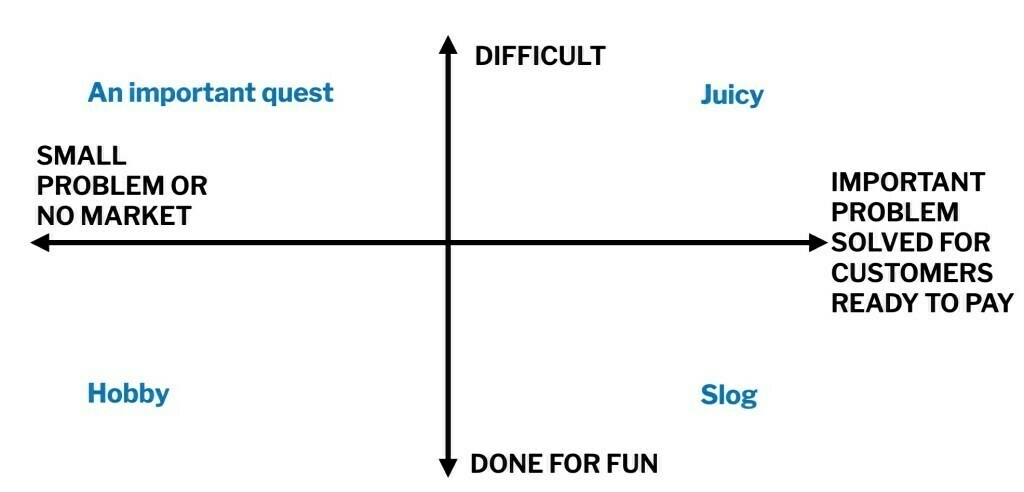
All too common are ‘fun’ businesses where someone finds a hobby they like and tries to turn it into a gig. While the work may be fun, the uphill grind of this sort of project is exhausting. If it’s something that lots of people can do and that customers don’t value that much, it might not be worth your time. Taking pictures, singing songs or playing the flute are fine hobbies, but hard to turn into paying jobs.Source: The slog, the hobby and the quest | Seth’s BlogOn the other hand, in the top right quadrant, there’s endless opportunity and plenty of work for people who can do difficult (unpopular) work that is highly valued by customers who are ready to pay to solve their problems. A forensic accountant gets more paid gigs than a bagpipe player.
Content-neutral sentence starters and phrases for academic writing
As part of preparing for my upcoming MSc I’ve been working through a course about preparing for postgraduate study. One of the links from that course was to the Academic Phrasebank from the University of Manchester, which I thought was useful.
The Phrasebank, which is also available in PDF and Kindle formats, takes the form of sentence starters for when you want to do things such as explain causality or signal transition. Really useful.

The Academic Phrasebank is a general resource for academic writers. It aims to provide you with examples of some of the phraseological ‘nuts and bolts’ of writing organised according to the main sections of a research paper or dissertation (see the top menu ). Other phrases are listed under the more general communicative functions of academic writing (see the menu on the left). The resource should be particularly useful for writers who need to report their research work. The phrases, and the headings under which they are listed, can be used simply to assist you in thinking about the content and organisation of your own writing, or the phrases can be incorporated into your writing where this is appropriate. In most cases, a certain amount of creativity and adaptation will be necessary when a phrase is used. The items in the Academic Phrasebank are mostly content neutral and generic in nature; in using them, therefore, you are not stealing other people’s ideas and this does not constitute plagiarism. For some of the entries, specific content words have been included for illustrative purposes, and these should be substituted when the phrases are used. The resource was designed primarily for academic and scientific writers who are non-native speakers of English. However, native speaker writers may still find much of the material helpful. In fact, recent data suggest that the majority of users are native speakers of English.Source: Academic Phrasebank | The University of Manchester
Image: Pixabay
AI, domination, and moral character
I don’t know enough on a technical level to know whether this is true or false, but it’s interesting from an ethical point of view. Meta’s chief AI scientist believes that intelligence is unrelated to a desire to dominate others, which seems reasonable.
He then extrapolates this to AI, pointing out that not only are we a long way off from a situation of genuine existential risk, but that such systems could be encoded with ‘moral character’.
I think that the latter point about moral character is laughable, given how quickly and easily people have managed to get around the safeguards of various language models. See the recent Thought Shrapnel posts on stealing ducks from a park, or how 2024 is going to be a wild ride of AI-generated content.

Fears that AI could wipe out the human race are "preposterous" and based more on science fiction than reality, Meta's chief AI scientist has said.Source: Fears of AI Dominance Are ‘Preposterous,’ Meta Scientist Says | InsiderYann LeCun told the Financial Times that people had been conditioned by science fiction films like “The Terminator” to think that superintelligent AI poses a threat to humanity, when in reality there is no reason why intelligent machines would even try to compete with humans.
“Intelligence has nothing to do with a desire to dominate. It’s not even true for humans,” he said.
“If it were true that the smartest humans wanted to dominate others, then Albert Einstein and other scientists would have been both rich and powerful, and they were neither,” he added.
Notification literacy, monk mode, and going outside for a walk
Back on my now-defunct literaci.es blog I had a post about notification literacy. My point was that instead of starting from the default position of having all notifications turned on, you might want to start from a default of having them all turned off.
On my Android phone running GrapheneOS, I use the Before Launcher. This not only has a minimalist homescreen, but has a configurable filter for ‘trivial notifications’. It allows me not to have to go ‘monk mode’ to be able to get things done.
And so to this blog post, which seems to see going outside your house for a walk without your phone as some kind of revolutionary act. I think the author considers this an act of willpower. You will never win a war against a system which is designed to destroy your attention through sheer willpower. You have to modify the system instead.

I’ve been experimenting with ways to be more disconnected from technology for a long time, from disabling notifications to using a dumbphone. However, a challenging exercise still hard to do is to go for a walk without my phone.Source: Leaving the phone at home | Jose M.[…]
It’s just a device, you might say. Oh no, it’s much more than that. It’s a chain you carry 24/7 connected to the rest of the world, and anyone can pull from the other side. People you care about, sure, but also a random algorithm that thinks you might be hungry, sending you a food delivery offer so you don’t cook today.
Microcast #102 — Rituals and Routines
A very short microcast about reading by the light of a fish tank in the early hours of the morning.
Show notes
Parenting the parents
This article in The Guardian discusses the challenges and opportunities of “parenting” one’s own parents, especially as people live longer.
It highlights the importance of encouraging older parents to engage with technology, as studies show it can improve cognition and memory. The article also talks about the importance of social engagement, physical activity, and nutrition.
Thankfully, my parents, both in their mid-seventies, are doing pretty well :)

Parenting no longer starts and stops with our children. Nor is it confined to those who have children. In a time of unrelenting change and ever-extending life, most of us will – at some stage – find ourselves “parenting” our own parents.Source: Walks, tech and protein: how to parent your own parents | The GuardianIndeed, many of us – particularly those who had families later – will find ourselves simultaneously parenting our kids and our parents. In one breath we’ll be begging our children to swap French fries for vegetables, and in the next breath we’ll be urging our parents to exchange cake for sardines. Little wonder today’s midlifers are known as the sandwich generation.
[...]Dr Eamon Laird, researcher in health and ageing at Limerick university, agrees that we should be encouraging older parents to try new things. And the further out of their comfort zone they feel, the better. “It’s always good to keep the mind active and fresh,” he told me. “New challenges can help build and maintain new brain connections and can be good for brain and overall health.”
[…]
As well as a daily walk, Laird recommends vitamin D and B12 supplements – both of which appear to moderate the chance of depression in older people. “Depression matters,” he added. “Not just because it reduces quality of life, but because in older people there seems to be a link between depression and dementia which we’re still unpacking.”
[…]
In truth, anyone over 50 would do well to follow these simple guidelines: engage with something new every day, take a daily walk of at least 20 minutes, socialise regularly, take a daily multivitamin for seniors and check the protein content of our meals. Perhaps we should think of it as self-parenting.
2024 is going to be a wild ride of AI-generated content
It’s on the NSFW side of things, but if you’re in any doubt that we’re entering a crazy world of AI-generated content, just check out this post.
As I’ve said many times before, the porn industry is interesting in terms of technological innovation. If we take an amoral stance, then there’s a lot of ‘content creators’ in that industry, and as the post I quote below points out, that there are going to be a lot of fake content creators over the next few months and years.
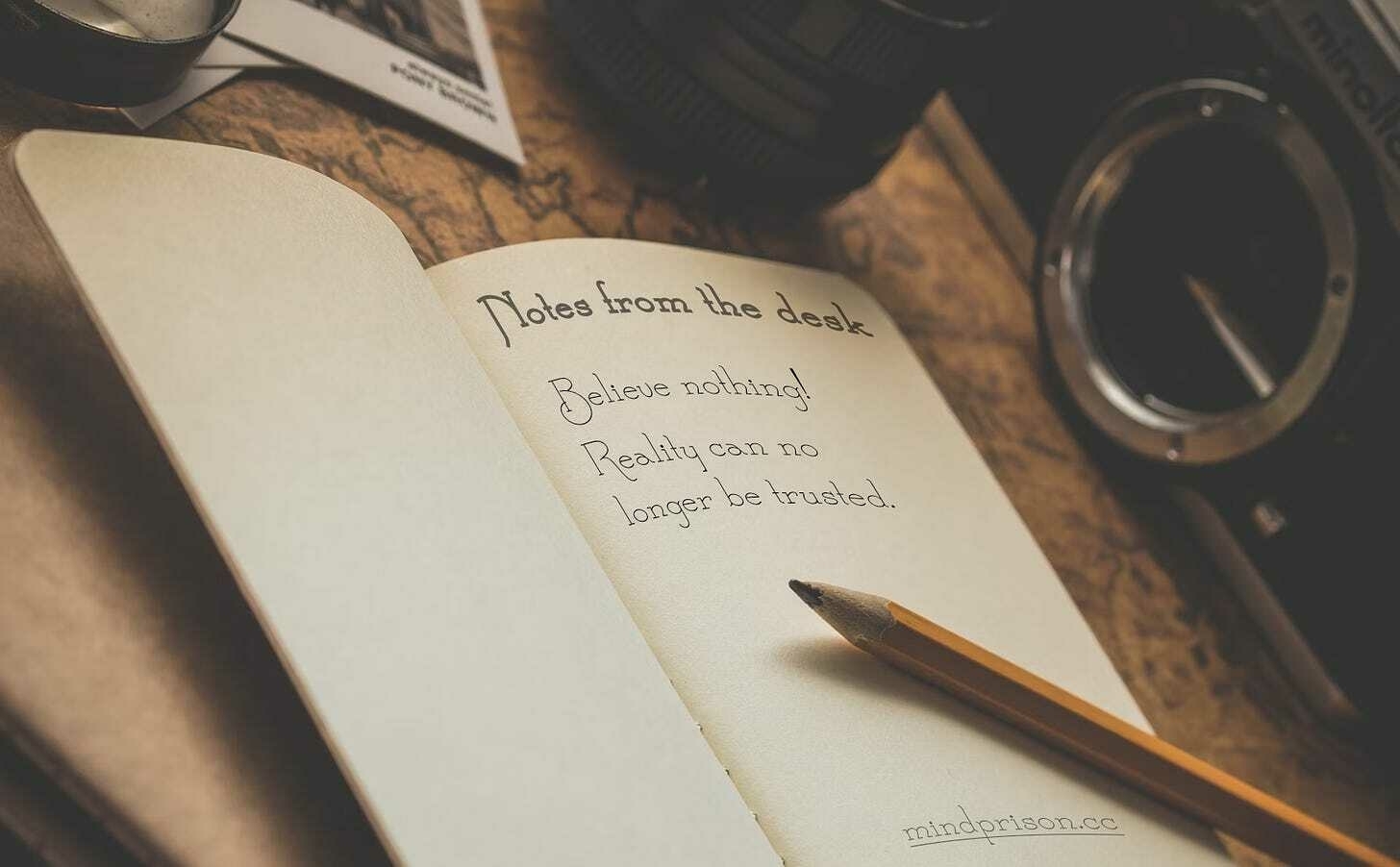
It is imperative to identify content sources you believe to be valuable now. Nothing new in the future will be credible. 2024 is going to be a wild ride of AI-generated content. We are never going to know what is real anymore.Source: Post-truth society is near | Mind PrisonThere will be some number of real people who will probably replace themselves with AI content if they can make money from it. This will result in doubting real content. Everything becomes questionable and nothing will suffice as digital proof any longer.
[…]
Our understanding of what is happening will continue to lag further and further behind what is happening.
Some will make the argument “But isn’t this simply the same problems we already deal with today?”. It is; however, the ability to produce fake content is getting exponentially cheaper while the ability to detect fake content is not improving. As long as fake content was somewhat expensive, difficult to produce, and contained detectable digital artifacts, it at least could be somewhat managed.
